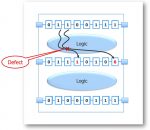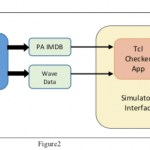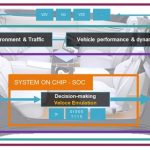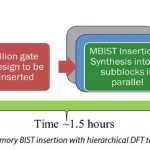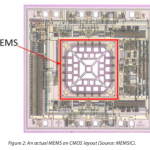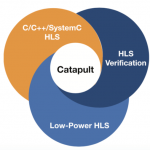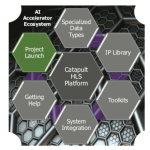The cost of an IC depends on many factors like: NRE, masks, fabrication, testing, packaging. Product engineers are tasked with testing each part and understanding what exactly is limiting the yields. Every company has a methodology for Physical Failure Analysis (PFA), and the challenge is to make this process as quick as possible,… Read More
Tcling Your Way to Low Power Verification
OK – maybe that sounds a little weird, but it’s not a bad description of what Mentor suggests in a recent white-paper. There are at least three aspects to power verification – static verification of the UPF and the UPF against the RTL, formal verification of state transition logic, and dynamic verification of at least some critical… Read More
Making pre-Silicon Verification Plausible for Autonomous Vehicles
I love reading about the amazing progress of autonomous vehicles, like when Audi and their A8 model sedan was the first to reach Level 3 autonomy, closely followed by Tesla at Level 2, although Tesla gets way more media attention here in the US. A friend of mine bought his wife a car that offers adaptive cruise control with auto-braking,… Read More
Can a hierarchical Test flow be used on a flat design?
It is pretty common for physical layout to work from a flattened hierarchy for blocks or even full chips, even though the front-end design starts with a hierarchical representation. This was not always the case. Way back when, the physical layout matched the logical hierarchy during the design process. Of course, this led to all… Read More
Mentor-Tanner Illuminate MEMS Sensing, Fusion
I enjoy learning and writing about new technologies closely connected to our personal and working lives (the kind you could explain to your Mom or a neighbor). So naturally I’m interested in AI, communication and security as applied to the home automation, transportation, virtual, augmented and mixed reality, industry and so… Read More
Mentor Highlights HLS Customer Use in Automotive Applications
I’ve talked before about Mentor’s work in high-level synthesis (HLS) and machine learning (ML). An important advantage of HLS in these applications is its ability to very quickly adapt and optimize architecture and verify an implementation to an objective in a highly dynamic domain. Design for automotive applications – for … Read More
PSS and Reuse: Great Solution But Not Hands-Free
If you’re new to PSS you could be forgiven for thinking that it automagically makes stimulus reusable, vertically from IPs to systems, horizontally between derivatives and between hardware-based and software-based testing. From a big-picture point of view these are certainly all potential benefits of PSS.
What PSS does provide… Read More
Konica Minolta Talks About High-Level Synthesis using C++
In the early days of chip design circa 1970’s the engineers would write logic equations, then manually reduce that logic using Karnaugh Maps. Next, we had the first generation of logic synthesis in the early 1980’s, which read in a gate-level netlist, performed logic reduction, then output a smaller gate-level netlist.… Read More
An AI Accelerator Ecosystem For High-Level Synthesis
AI accelerators as engines for object or speech recognition (among many possibilities), are becoming increasingly popular for inference in mobile and power-constrained applications. Today much of this inferencing runs largely in software on CPUs or GPUs thanks to the sheer size of the smartphone market, but that will shift… Read More
#56thDAC Discussion on Calibre in the Cloud Brings Sunshine to SOC Developers
It was inevitable that EDA applications would meet the cloud. EDA has a long history of creating some of the most daunting compute challenges. This arises from employing current generation chips to design the next generation chips. Despite growing design complexity, many tools have kept pace and even reduced runtimes from generation… Read More


